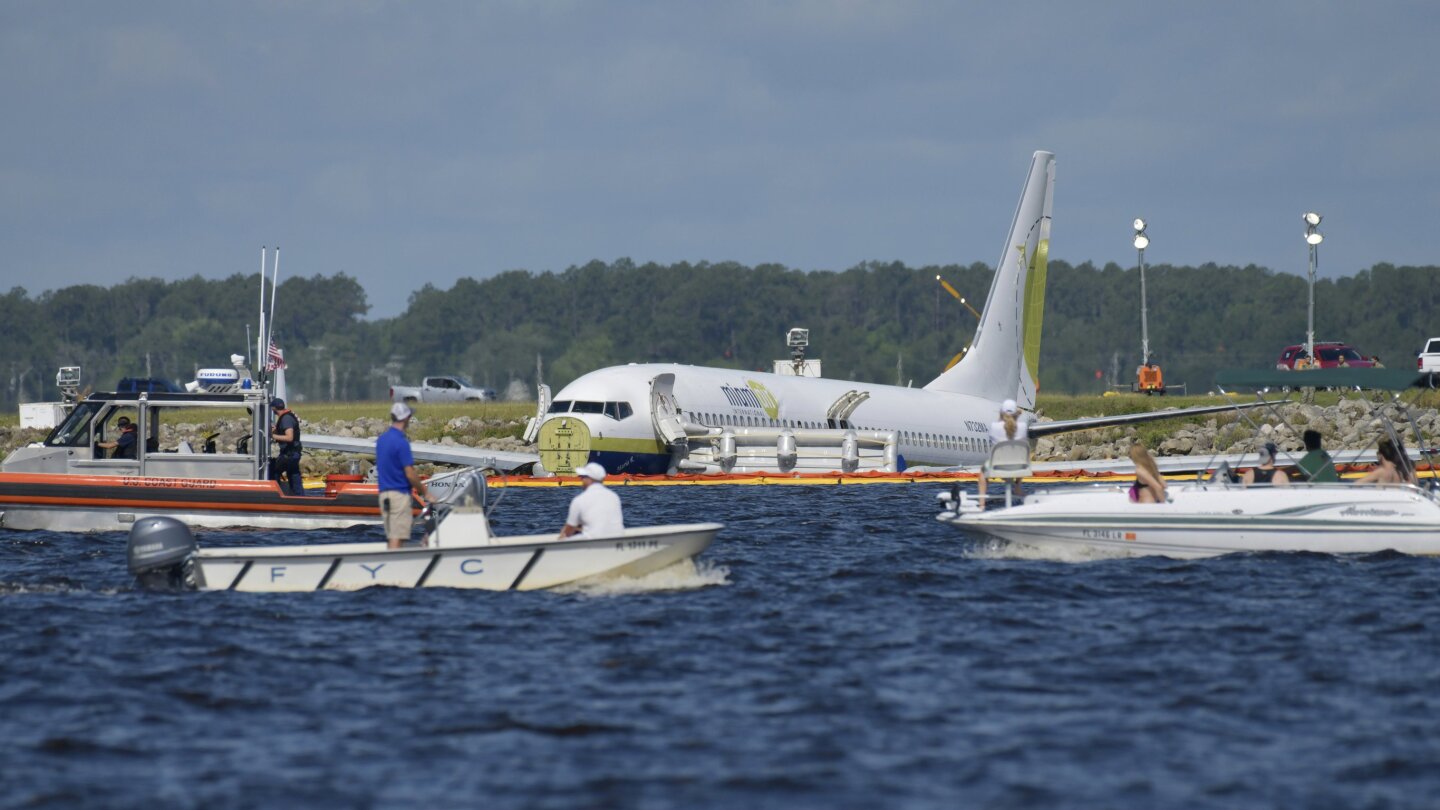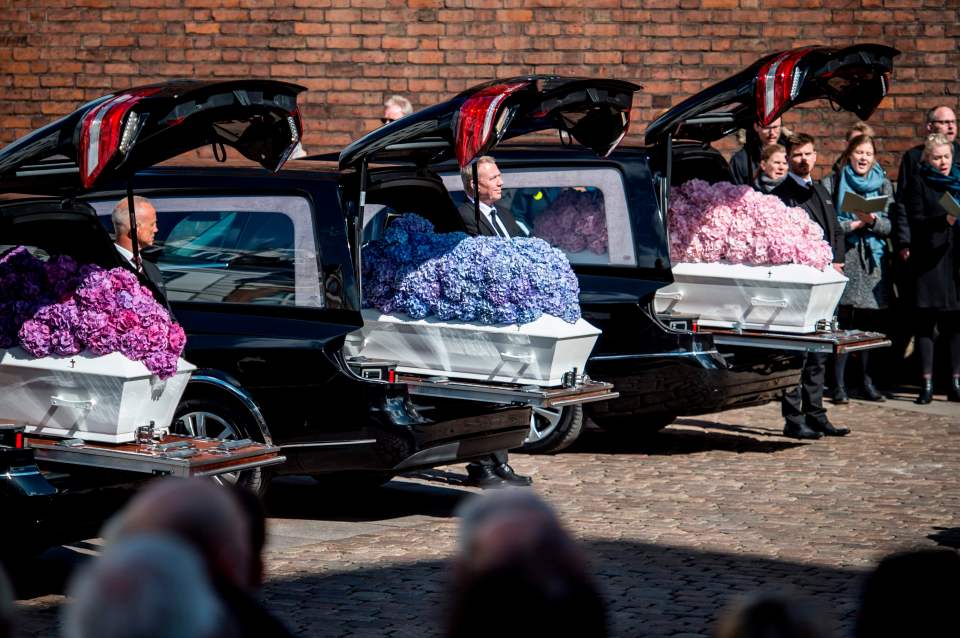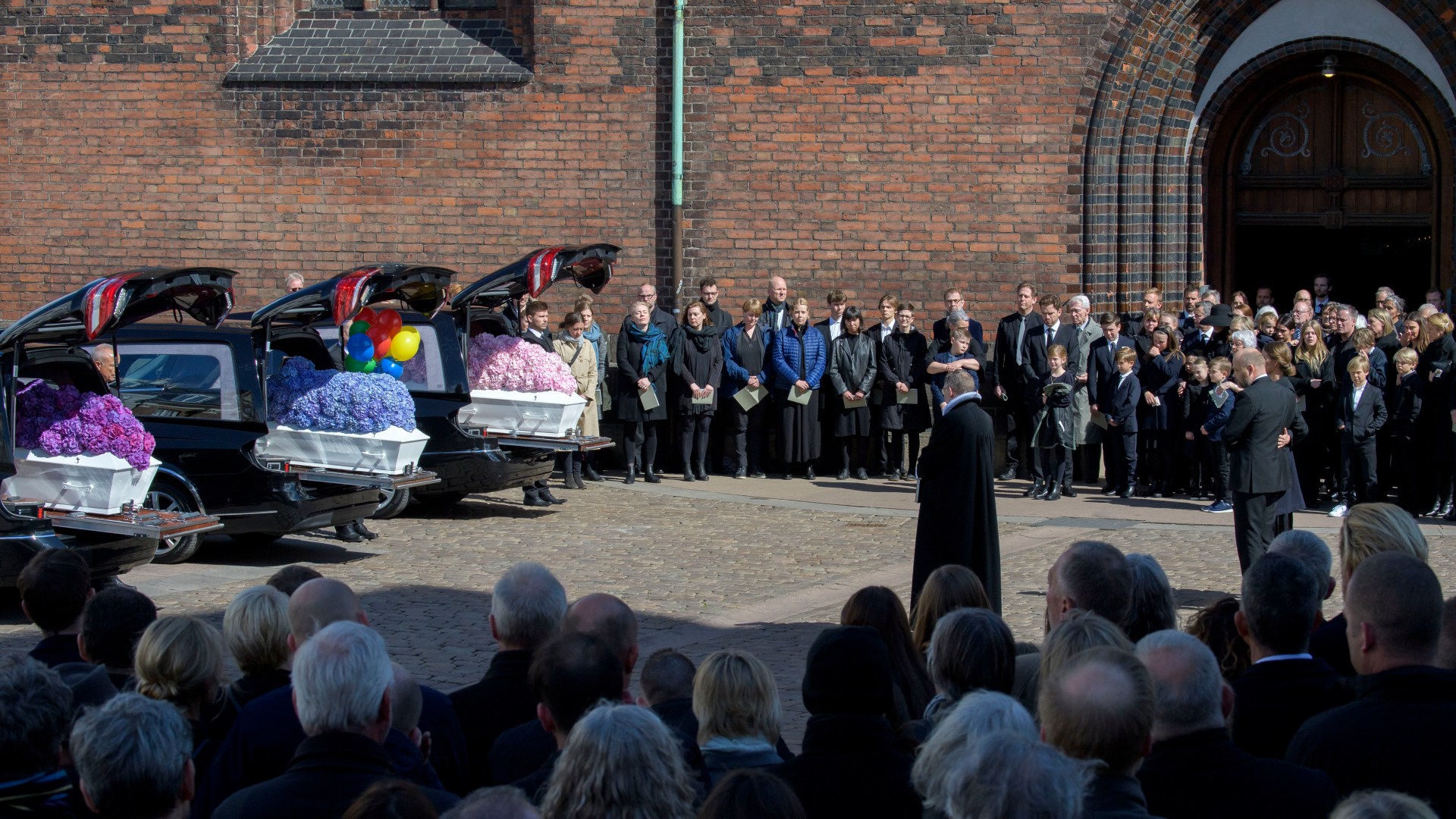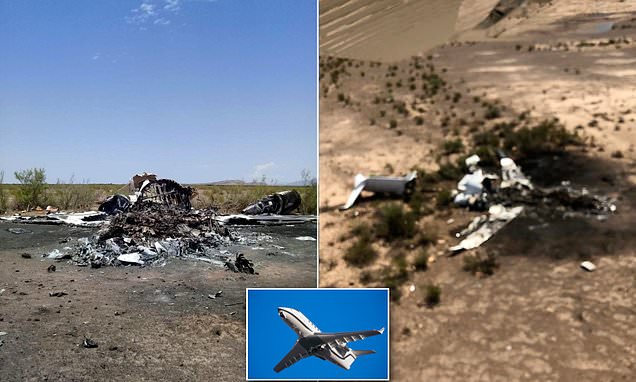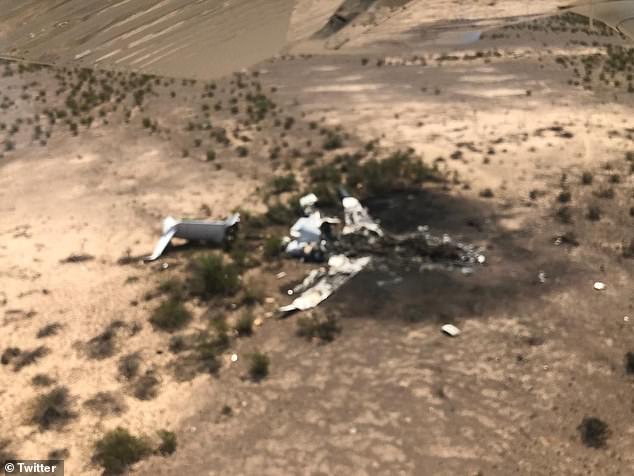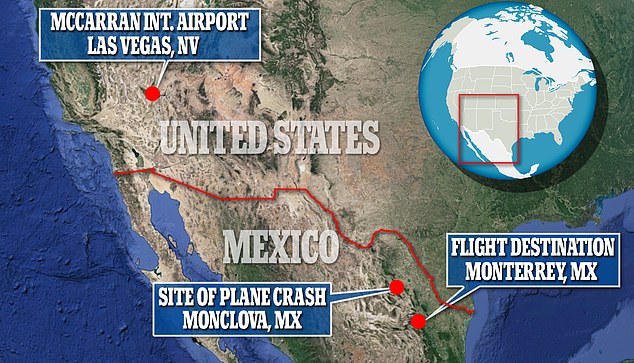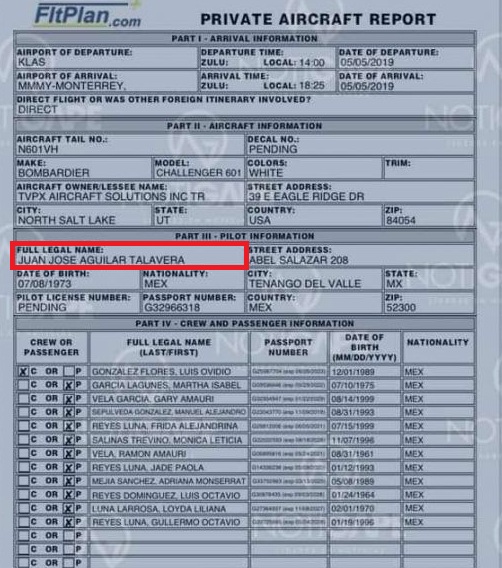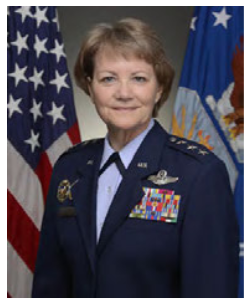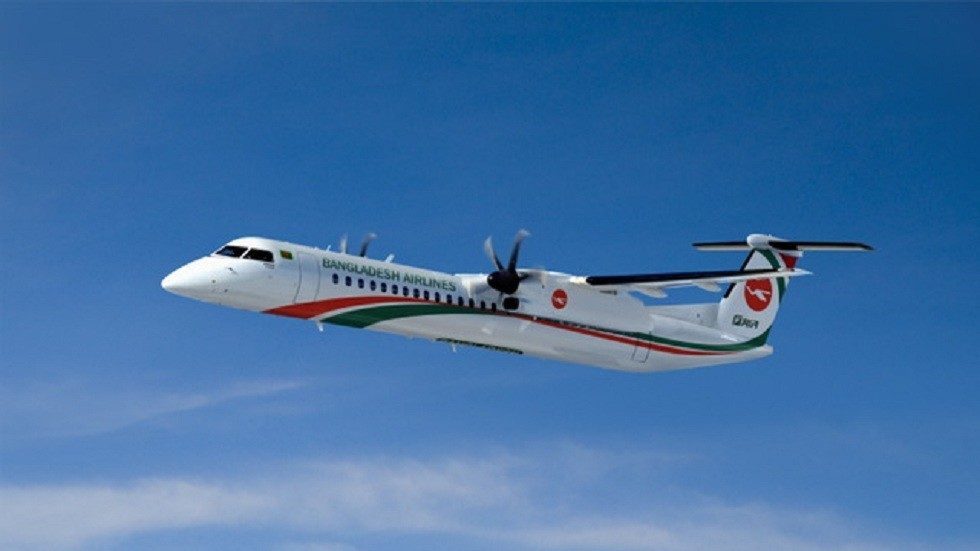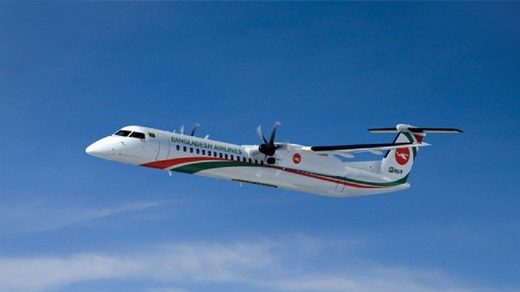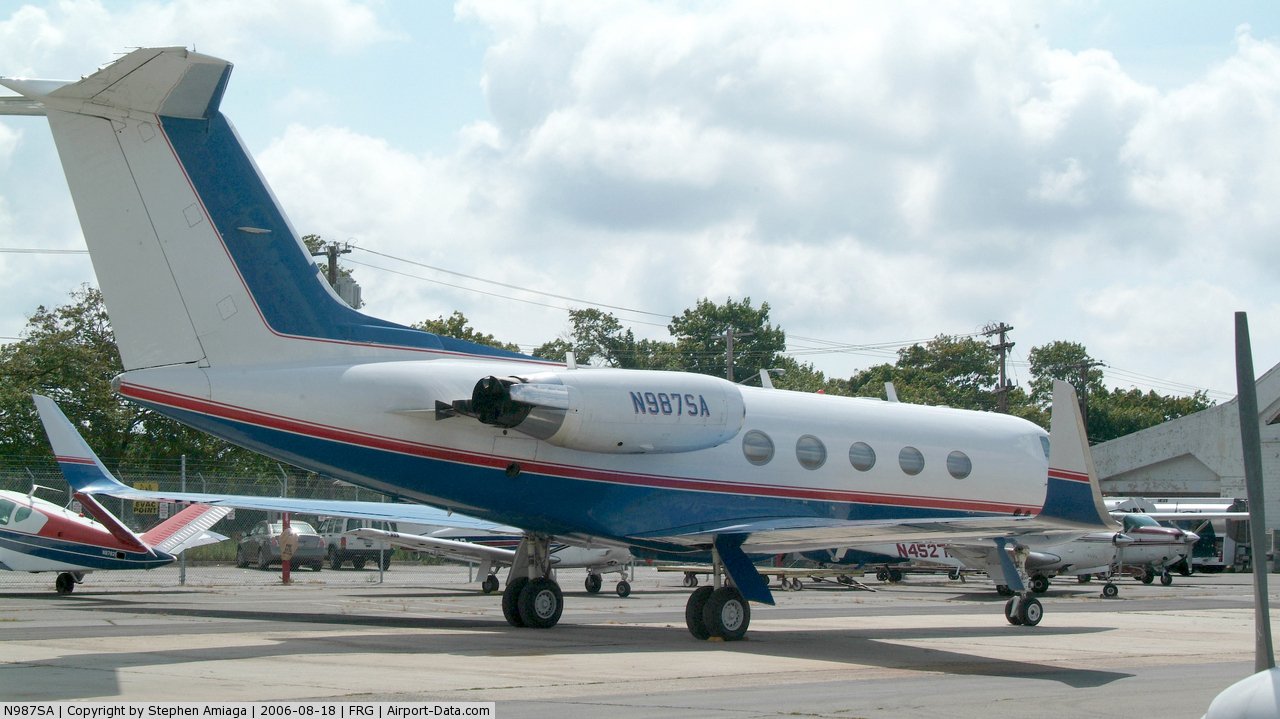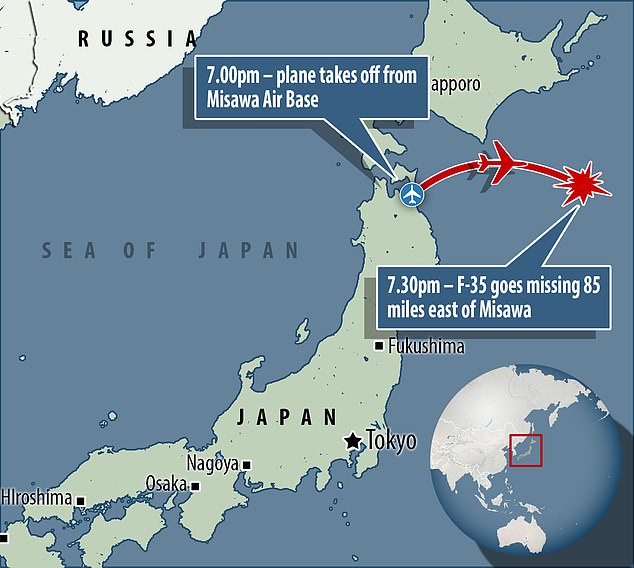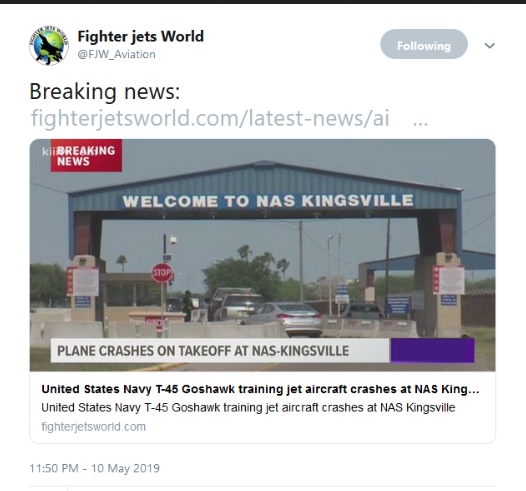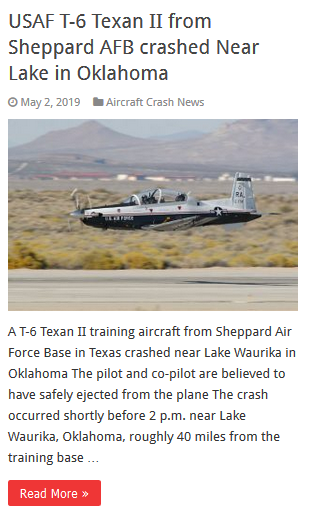Regarding the jet that crash landed in Jacksonville, FL and slid into the St. Johns river, although there were no human fatalities, today's paper reports: "Navy divers on Sunday began recovering containers holding the corpses of cats and dogs that drowned in the forward cargo area of the plane."
Thrust reverser 'not working' on plane that crashed in river in Florida
Thrust reverser 'not working' on plane that crashed in river in Florida
May 6, 2019 - A feature that helps aircraft slow down on landing was broken on a
Boeing 737 that skidded into a river in Florida, a top transportation safety official said on Sunday (May 5).
The plane carrying 143 people slid off the runway after a hard landing last Saturday at a naval air station in Jacksonville
during a lightning storm.
Police said 21 people were taken to hospital with minor injuries, but no fatalities or critical injuries were reported.
Transport safety officials said one of the thrust reversers, which are supposed to help to slow the aircraft down, was not working.
"The aircraft had been in maintenance and the maintenance log noted that the left-hand thrust reverser was inoperative," Mr Bruce Landsberg, vice-chairman of the National Transportation Safety Board, told reporters on Sunday.
He said investigators would be examining the maintenance of the aircraft in the weeks prior to the accident "and the condition of the thrust reversers will obviously be of interest".
The pilot also requested a change of runway, landing on one air traffic control advised had naval equipment on it, reducing the available runway length by 365m, Mr Landsberg said.
"We don't know what they were thinking or why they made that choice. That will be one of the things we look to find out, as we go through the cockpit voice recorder," he said.
The flight data recorder had been recovered, but the cockpit voice recorder remained underwater in the tail of the aircraft.
"When we recover it, (it) will give us much more information on what the crew was thinking," he said.
Thunderstorms and lightning have been hampering efforts to retrieve the plane fuselage.
The navy had arranged for divers to recover several pets which are believed to have drowned in the cargo hold, he said.
Booms had also been set up to contain jet fuel spilling into the St Johns River.
Passengers on the flight from the US base at Guantanamo Bay in Cuba to Jacksonville included military personnel and family members.
Passengers clambered across the wings of the partially submerged plane before being transported to shore in inflatable boats.
"We couldn't tell where we were, a river or an ocean. There was rain coming down. There was lightning and thunder. We stood on that wing for a significant period of time," Ms Cheryl Bormann, a defence attorney who was on board the flight, told CNN.
The plane involved was a Boeing 737-800, in operation for 18 years, according to the FlightRadar24 website.
US aerospace giant Boeing is under scrutiny following two crashes that killed a total of 346 passengers and crew and grounded its newer 737 Max planes worldwide.
Both a
Lion Air crash in Indonesia in October and
March's Ethiopian Airlines crash outside Addis Ababa occurred shortly after takeoff.
~~~
No survivors found in Mexico crash of jet carrying 13 people
No survivors found in Mexico crash of jet carrying 13 people
May6, 2019 - All 13 people aboard were killed when a private jet crashed between the U.S. city of Las Vegas and Monterrey in northern Mexico, authorities said on Monday.
The wreckage of the plane was found via aerial surveillance in a remote mountainous zone in the northern municipality of Ocampo, the government of Coahuila state said in a statement.
A photograph published on local television network Milenio showed what it said were the burnt remnants of the plane, broken into pieces, spread over charred earth.
The Coahuila government said the flight plan listed 13 people on board. It said no survivors were found.
Mexican media reported that the passengers had been to a boxing match between Mexican boxer Saul "Canelo" Alvarez and U.S. fighter Daniel Jacobs in Las Vegas on Saturday.
The nationalities of the victims were not immediately clear. The surnames of the three crew and 10 passengers published by the Coahuila government were all Hispanic.
The victims were aged between 57 and 19, according to a version of the passenger list published in Mexican media.
Newspaper Diario de Yucatan said on its website that among the victims were 55-year-old businessman Luis Octavio Reyes Dominguez, his wife, and their three children.
In a statement, Canada's Bombardier Inc identified the jet as a Challenger 601 and said the plane had gone missing about 150 nautical miles from the northern Mexican city of Monclova.
Expressing its condolences to the victims, the company said it had been in touch with Canada's transportation safety board and would work with the investigating authorities.
Mexican broadcaster Televisa reported the twin-engine jet lost contact on Sunday with air traffic controllers sometime after 5:20 p.m. local time (2220 GMT) as the pilot descended to avoid a storm.
Francisco Martinez, an emergency services official in Coahuila, told Milenio
recent adverse weather conditions would form part of th investigation into the crash. However, he stopped short of saying weather had caused it.


